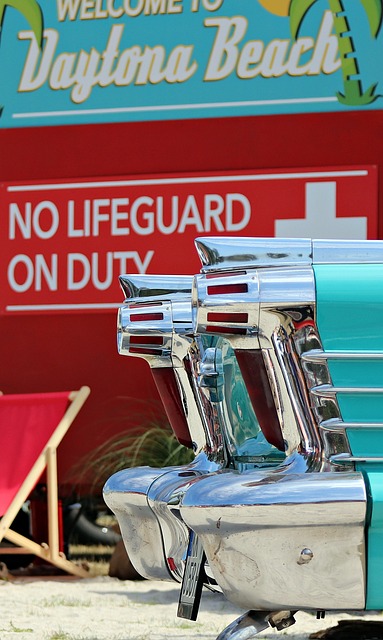Classic vehicle shipping demands specialized care due to historical value, intricate construction, and unique features. Reputable transporters specializing in precious cargo ensure secure long-distance movement, protect from elements, and alleviate stress for owners, preserving these valuable assets. Preparation includes meticulous cleaning, inspecting, securing loose items, engine operational checks, and disassembling complex parts. Proper crating and padding safeguard against damage during transit. Shipping options include road (direct delivery but potentially costly), rail (cost-effective, eco-friendly for long hauls), or sea freight (highest capacity, affordable for international travel).
Shipping a classic vehicle requires careful consideration to ensure its safety and secure transportation. This comprehensive guide explores the essentials of classic vehicle shipping, from understanding the basics and reaping the benefits to preparing your cherished ride for the journey ahead. We’ll also dissect the various shipping methods—road, rail, or sea—helping you make an informed decision tailored to your needs. Get ready to navigate this unique logistics process with ease.
- Understanding Classic Vehicle Shipping: The Basics and Benefits
- Preparing Your Classic Vehicle for Secure Transportation
- Choosing the Right Shipping Method: Road, Rail, or Sea?
Understanding Classic Vehicle Shipping: The Basics and Benefits

Shipping a classic vehicle requires specialized care due to their historical value, intricate construction, and unique features. Understanding the process of classic vehicle shipping involves grasping several key aspects. Firstly, it entails finding reputable transporters who specialize in handling such precious cargo. These experts have the necessary equipment and knowledge to ensure the safe transportation of your classic car, truck, or motorcycle.
Classic vehicle shipping offers numerous benefits for owners. It provides a secure way to move these vehicles over long distances, preserving their condition. Professional shipping also protects classics from the elements during transit, reducing the risk of damage. Moreover, it allows owners to avoid the stress and hassle of driving such valuable assets, ensuring they reach their destination safely and on time.
Preparing Your Classic Vehicle for Secure Transportation

When preparing a classic vehicle for shipping, meticulous attention to detail is key. Begin by ensuring the car is thoroughly cleaned and inspected for any existing damage. A detailed documentation of its current condition will serve as valuable reference upon delivery.
Next, secure all loose items within the vehicle and ensure that the engine is in good working order. Consider disassembling complex or delicate parts, such as custom interiors or unique mechanical components, to prevent displacement during transit. Proper crating and padding are essential for safeguarding your classic vehicle against potential scratches, dents, or more severe damage while it’s in transportation.
Choosing the Right Shipping Method: Road, Rail, or Sea?

When shipping a classic vehicle, understanding your options is key to an easy and safe journey. The primary methods include road, rail, or sea transport – each with its advantages. Road shipping is ideal for shorter distances, offering direct delivery and flexibility. It’s perfect for those who want control over the process, allowing them to choose pick-up and drop-off locations. However, it can be more expensive than other options due to fuel costs and limited capacity.
Rail transport is a cost-effective choice for longer hauls, as it’s more efficient in terms of fuel consumption and carbon emissions. It provides a stable, smooth journey, minimizing the risk of damage during transit. However, rail shipping may have stricter schedules and limited availability depending on the route and time of year. For international travel, sea freight stands out. Despite being the slowest option, it offers immense capacity and is ideal for heavy or bulky items like classic cars. Sea shipping is often the most economical choice for long-distance, cross-border movements.
Shipping a classic vehicle requires careful preparation and an understanding of the best methods for secure transportation. By familiarizing yourself with the process, from preparing your vehicle to choosing between road, rail, or sea shipping, you can ensure a smooth journey for your cherished classic. Opting for professional services tailored to these specific needs will guarantee the safety and integrity of your vehicle during transit, allowing you to focus on enjoying its timeless appeal.
